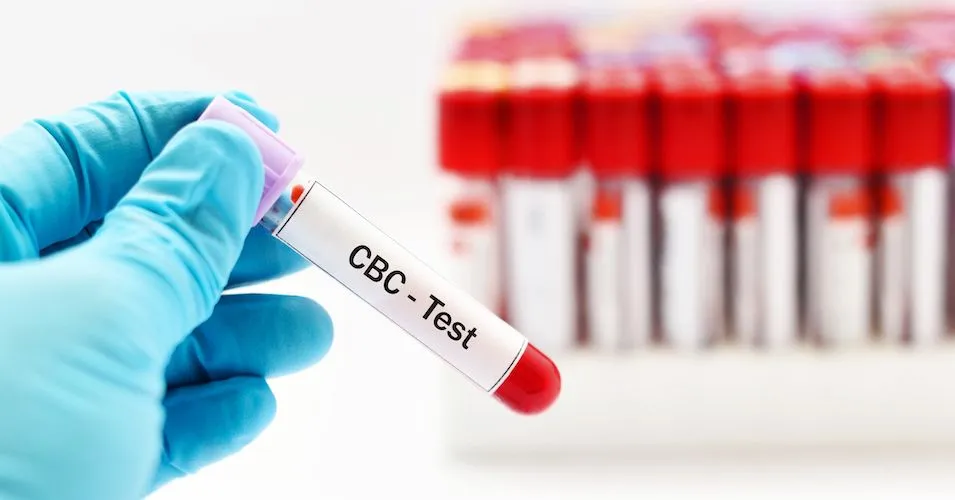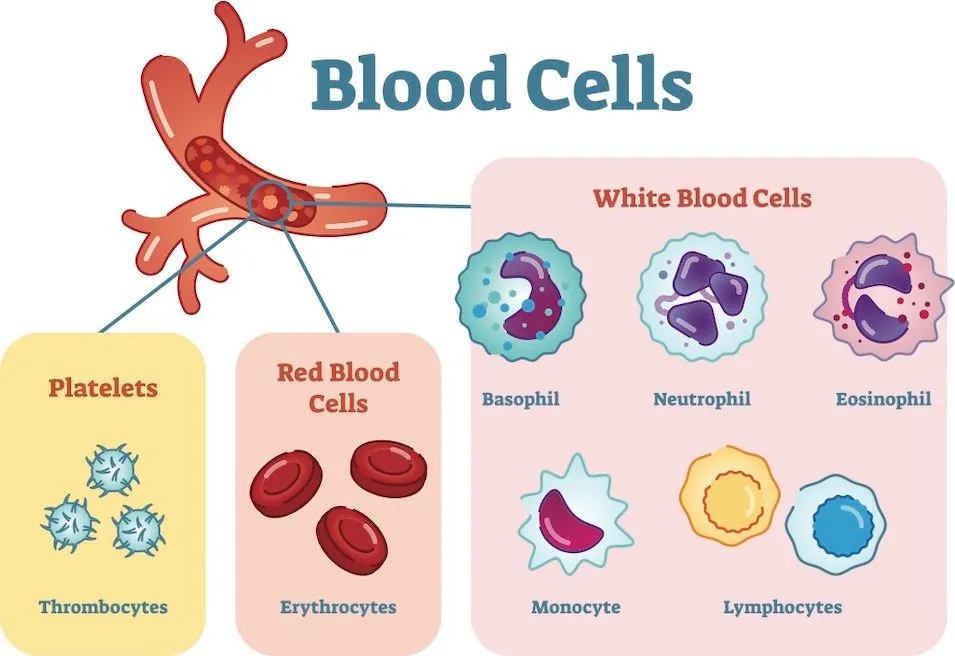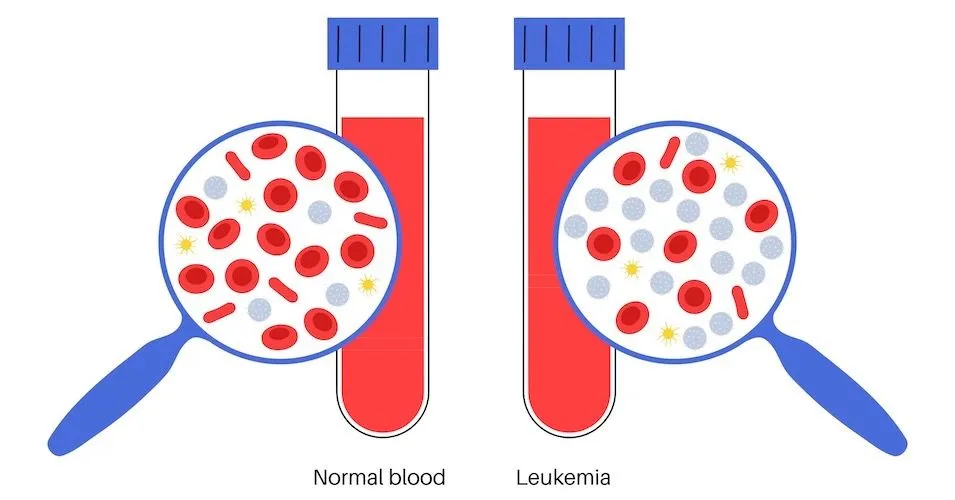What is a Complete Blood Count (CBC) Test for CLL?

A complete blood count is a standard test part of everyone’s annual checkup. How does this test differ for people with chronic lymphocytic leukemia (CLL)? How do you interpret your test results? Learn answers to these questions and more below.
Complete Blood Count (CBC) for CLL
A complete blood count (CBC) is a test that reviews the number of blood cells in a sample using a specialized machine. If there is anything abnormal, the person evaluating the results, called a pathologist, may also look at the sample under a microscope. The test evaluates the number of:
-
White blood cells, also called leukocytes, help fight infections
-
Red blood cells, also called erythrocytes, help carry oxygen to parts of the body
-
Hemoglobin is a protein in red blood cells that carries oxygen
-
Hematocrit is the percentage of red blood cells in a sample
-
-
Platelets, also called thrombocytes, help clot blood
As CLL affects a type of white blood cell, an additional test called “differential” is added to the CBC to examine the specific types of white blood cells.

Complete Blood Count with Differential Meaning
If your CBC test shows elevated white blood cells, a differential will likely be added to specifically evaluate which white blood cell type is high.
White blood cell types include basophils, neutrophils, eosinophils, monocytes, and lymphocytes. CLL affects B-cell lymphocytes, or B-cells for short.
If the number of lymphocytes (also referred to as your lymphocyte “count”) is elevated, additional testing like those listed here will be conducted to confirm a CLL diagnosis. To review what normal blood count ranges are, please see below.
CLL cells become elevated because they don’t die when they should, which can crowd out other types of blood cells. CLL treatments can help manage the cancer over time.

Complete Blood Count Results for CLL
Interested in keeping track of your CLL labs in one place? Click on the link below to access your free account! Doing so will help you see everything in one place and easily flag any values out of range.
Once you have your CBC test results, how do you interpret them? What is considered a normal range of blood counts?
Normal blood count ranges as measured in cells per liter (cells/L) or grams per deciliter (grams/dL) include:
- Red blood cell (RBC)
- Male: 4.35 trillion to 5.65 trillion cells/L
- Female: 3.92 trillion to 5.13 trillion cells/L
- Hemoglobin (Hb)
- Male: 13.2 to 16.6 grams/dL (132 to 166 grams/L)
- Female: 11.6 to 15 grams/dL (116 to 150 grams/L)
- Hematocrit (Hct)
- Male: 38.3% to 48.6%
- Female: 35.5% to 44.9%
- Platelet count (PLT)
- Male: 135 billion to 317 billion/L
- Female: 157 billion to 371 billion/L
- White blood cell (WBC)
- Male or female: 3.4 billion to 9.6 billion cells/L
Normal ranges for individual types of white blood cell counts from the differential portion of the test are measured by microliter (μl or mcL) or cubic millimeter (mm3) of blood. These include:
-
Neutrophils (NEUT): 2,500-8,000 per microliter (μl) (55-70% of blood)
-
Lymphocytes (LYMPH): 1,000-4,000 per μl (20–40%)
-
Monocytes (MONO): 100-700 per μl (2–8%)
-
Eosinophils (EOS): 50-500 per μl (1–4%)
-
Basophils (BASO): 25-100 per μl (0.5-1%)
Each facility may have slightly different variations of normal values.
Once additional tests confirm the increased lymphocytes are CLL, a diagnosis of CLL is made if the lymphocyte count is over 5,000 cells per microliter (μl) of blood.
If the lymphocyte count is not yet over 5,000 cells per microliter but other tests have confirmed that the B-cells are cancerous, it is referred to as CLL’s pre-condition monoclonal B-cell lymphocytosis (MBL).
If you have a confirmed diagnosis of CLL, click here to learn about when you may need treatment.
Can Sources Other than Cancer Cause Blood Counts to be Abnormal?
Apart from cancer, there are various reasons that can account for an increase or decrease in your blood counts. These may include conditions like active infections, exposure to chemicals, autoimmune disorders, nutrition deficiencies, and more. Consult with your doctor about other areas that may be affecting your blood counts.
Summary
A complete blood count (CBC) with a differential test helps provide people with CLL information about the status of their blood cell counts. This information can assist patients and their healthcare team in monitoring the cancer’s status over time and provide insight that may influence treatment decisions.
Sources:
A complete blood count is a standard test part of everyone’s annual checkup. How does this test differ for people with chronic lymphocytic leukemia (CLL)? How do you interpret your test results? Learn answers to these questions and more below.
Complete Blood Count (CBC) for CLL
A complete blood count (CBC) is a test that reviews the number of blood cells in a sample using a specialized machine. If there is anything abnormal, the person evaluating the results, called a pathologist, may also look at the sample under a microscope. The test evaluates the number of:
-
White blood cells, also called leukocytes, help fight infections
-
Red blood cells, also called erythrocytes, help carry oxygen to parts of the body
-
Hemoglobin is a protein in red blood cells that carries oxygen
-
Hematocrit is the percentage of red blood cells in a sample
-
-
Platelets, also called thrombocytes, help clot blood
As CLL affects a type of white blood cell, an additional test called “differential” is added to the CBC to examine the specific types of white blood cells.

Complete Blood Count with Differential Meaning
If your CBC test shows elevated white blood cells, a differential will likely be added to specifically evaluate which white blood cell type is high.
White blood cell types include basophils, neutrophils, eosinophils, monocytes, and lymphocytes. CLL affects B-cell lymphocytes, or B-cells for short.
If the number of lymphocytes (also referred to as your lymphocyte “count”) is elevated, additional testing like those listed here will be conducted to confirm a CLL diagnosis. To review what normal blood count ranges are, please see below.
CLL cells become elevated because they don’t die when they should, which can crowd out other types of blood cells. CLL treatments can help manage the cancer over time.

Complete Blood Count Results for CLL
Interested in keeping track of your CLL labs in one place? Click on the link below to access your free account! Doing so will help you see everything in one place and easily flag any values out of range.
Once you have your CBC test results, how do you interpret them? What is considered a normal range of blood counts?
Normal blood count ranges as measured in cells per liter (cells/L) or grams per deciliter (grams/dL) include:
- Red blood cell (RBC)
- Male: 4.35 trillion to 5.65 trillion cells/L
- Female: 3.92 trillion to 5.13 trillion cells/L
- Hemoglobin (Hb)
- Male: 13.2 to 16.6 grams/dL (132 to 166 grams/L)
- Female: 11.6 to 15 grams/dL (116 to 150 grams/L)
- Hematocrit (Hct)
- Male: 38.3% to 48.6%
- Female: 35.5% to 44.9%
- Platelet count (PLT)
- Male: 135 billion to 317 billion/L
- Female: 157 billion to 371 billion/L
- White blood cell (WBC)
- Male or female: 3.4 billion to 9.6 billion cells/L
Normal ranges for individual types of white blood cell counts from the differential portion of the test are measured by microliter (μl or mcL) or cubic millimeter (mm3) of blood. These include:
-
Neutrophils (NEUT): 2,500-8,000 per microliter (μl) (55-70% of blood)
-
Lymphocytes (LYMPH): 1,000-4,000 per μl (20–40%)
-
Monocytes (MONO): 100-700 per μl (2–8%)
-
Eosinophils (EOS): 50-500 per μl (1–4%)
-
Basophils (BASO): 25-100 per μl (0.5-1%)
Each facility may have slightly different variations of normal values.
Once additional tests confirm the increased lymphocytes are CLL, a diagnosis of CLL is made if the lymphocyte count is over 5,000 cells per microliter (μl) of blood.
If the lymphocyte count is not yet over 5,000 cells per microliter but other tests have confirmed that the B-cells are cancerous, it is referred to as CLL’s pre-condition monoclonal B-cell lymphocytosis (MBL).
If you have a confirmed diagnosis of CLL, click here to learn about when you may need treatment.
Can Sources Other than Cancer Cause Blood Counts to be Abnormal?
Apart from cancer, there are various reasons that can account for an increase or decrease in your blood counts. These may include conditions like active infections, exposure to chemicals, autoimmune disorders, nutrition deficiencies, and more. Consult with your doctor about other areas that may be affecting your blood counts.
Summary
A complete blood count (CBC) with a differential test helps provide people with CLL information about the status of their blood cell counts. This information can assist patients and their healthcare team in monitoring the cancer’s status over time and provide insight that may influence treatment decisions.
Sources:

about the author
Megan Heaps
Megan joined HealthTree in 2022. She enjoys helping patients and their care partners understand the various aspects of the cancer. This understanding enables them to better advocate for themselves and improve their treatment outcomes.
More on Navigating Your Health
Trending Articles
Get the latest thought leadership on your Leukemia delivered straight to your inbox
Subscribe to the weekly newsletter for news, stories, clinical trial updates, and helpful resources and events with cancer experts.
Thanks to our HealthTree Community for Leukemia Sponsors:














